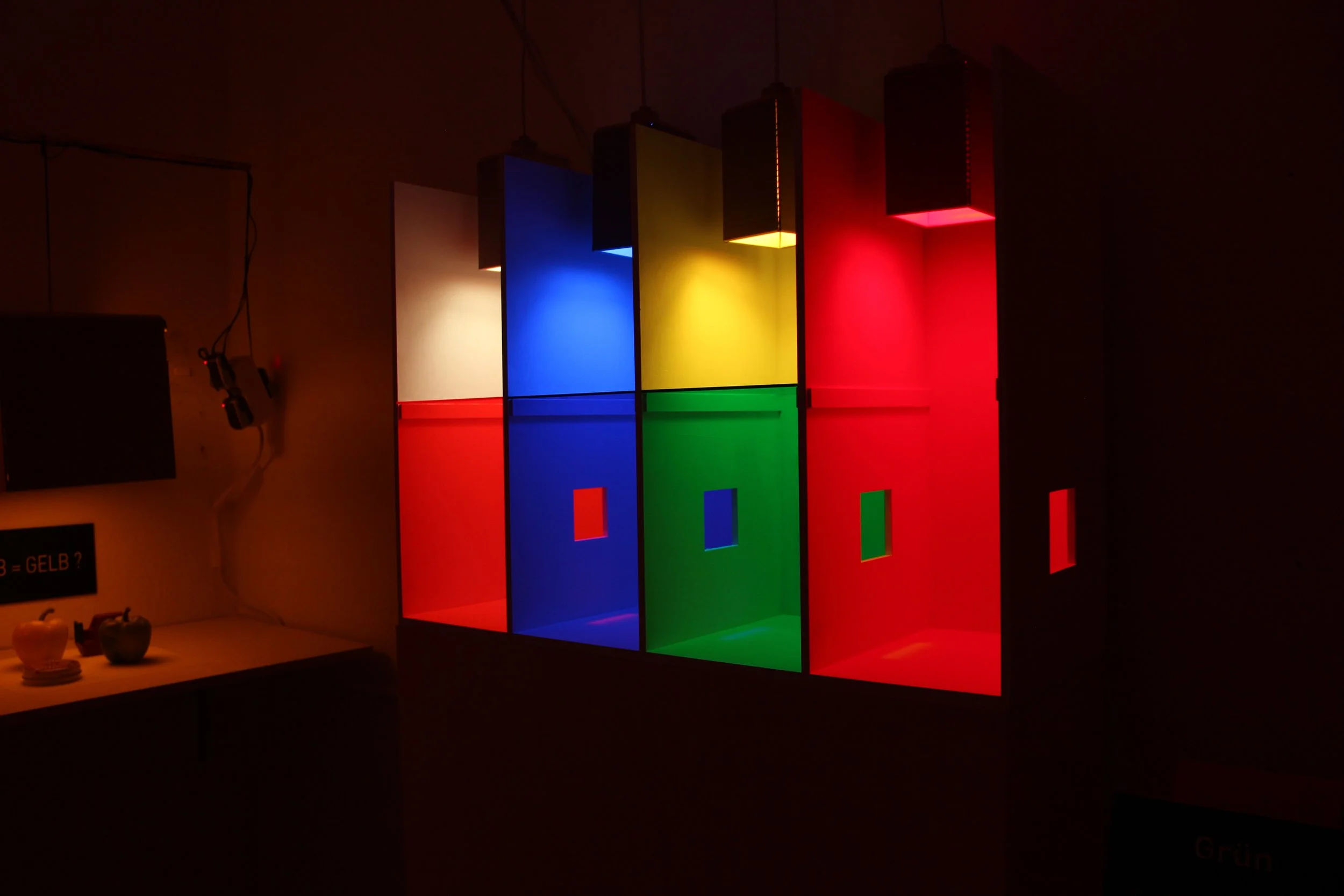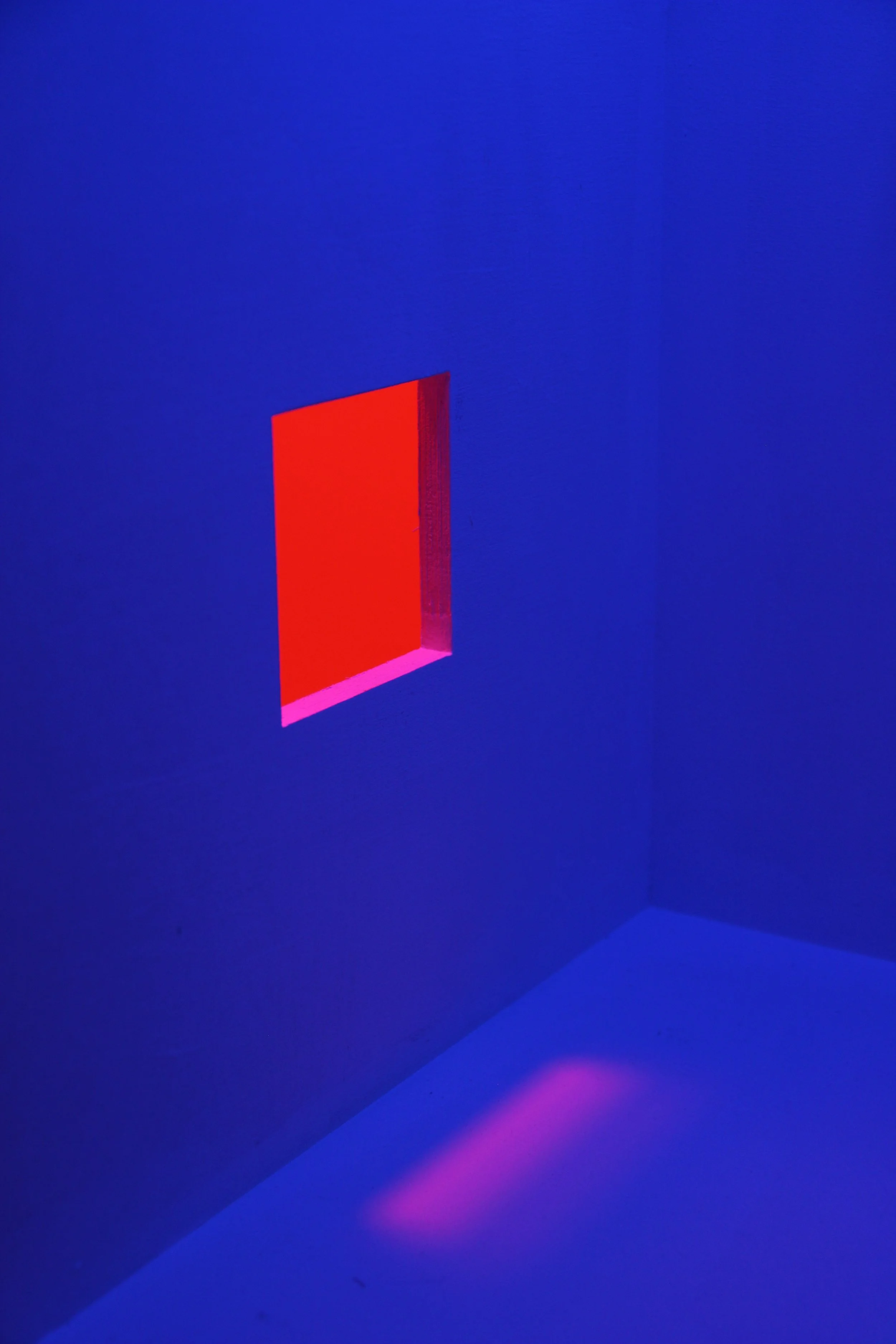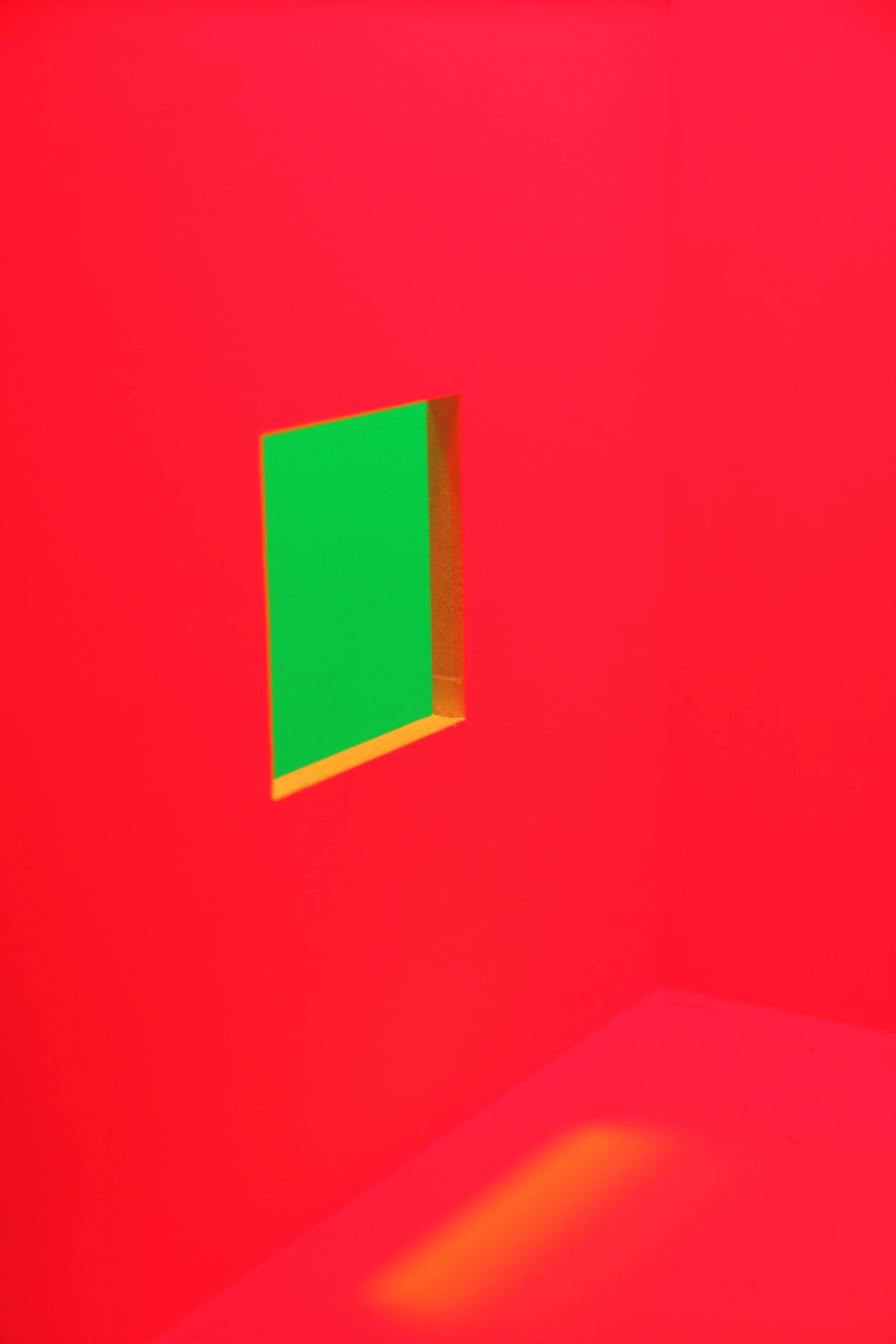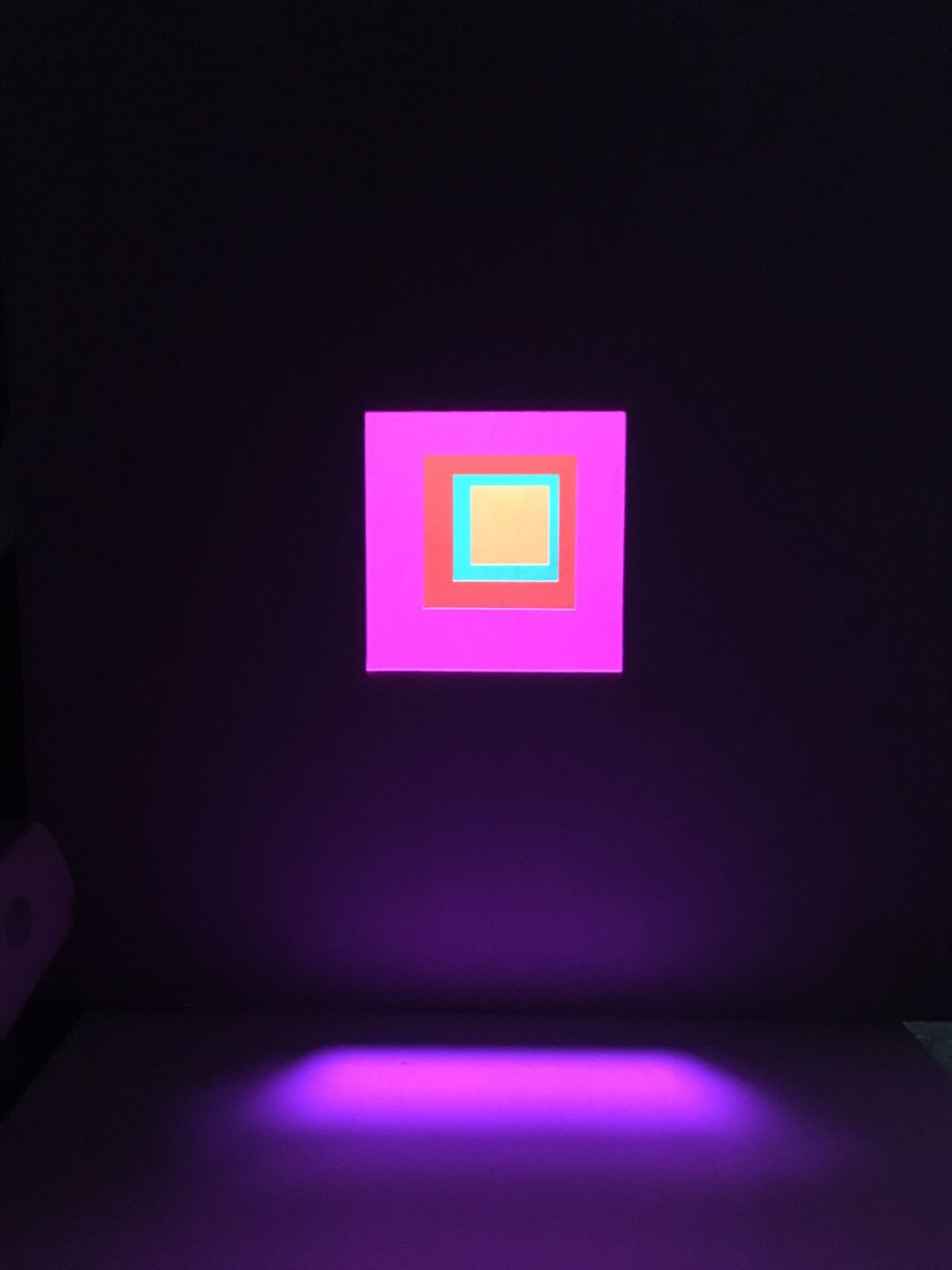Light & Colour: Aesthetic phenomena from physics
BA Project | 2018
Colour is a physical phenomenon resulting from light. The project "Light & Colour" investigates how light interacts with surfaces to enable colour perception. Based on experimental physics, it features four interactive experiments where participants can explore various visual phenomena and learn about the effects of light and colour in a playful, participatory manner.
Experiment no. 1: Pigments or Nano Structures?
Guessing the colour source
The colours of objects depend on their surface. These can either be body colours or structural colours.
Body colours are based on pigments: this means the chemical composition influences which part of the light spectrum is absorbed and which is reflected. The reflected light results in the visible colour.
Structural colours are the result of the microscopic physical composition of the surface - the nano structures. These create interference and scattering of the incoming light in order to reproduce a visible color as.
Destroying the surface structure reveals the colour souced: pigments or nanostructures. Pigments retain their colouring even in powder form (see the flamingo feather) while structural colours disappear because the physical structure is no longer available to interfer with light (see the wings of the morpho butterfly).


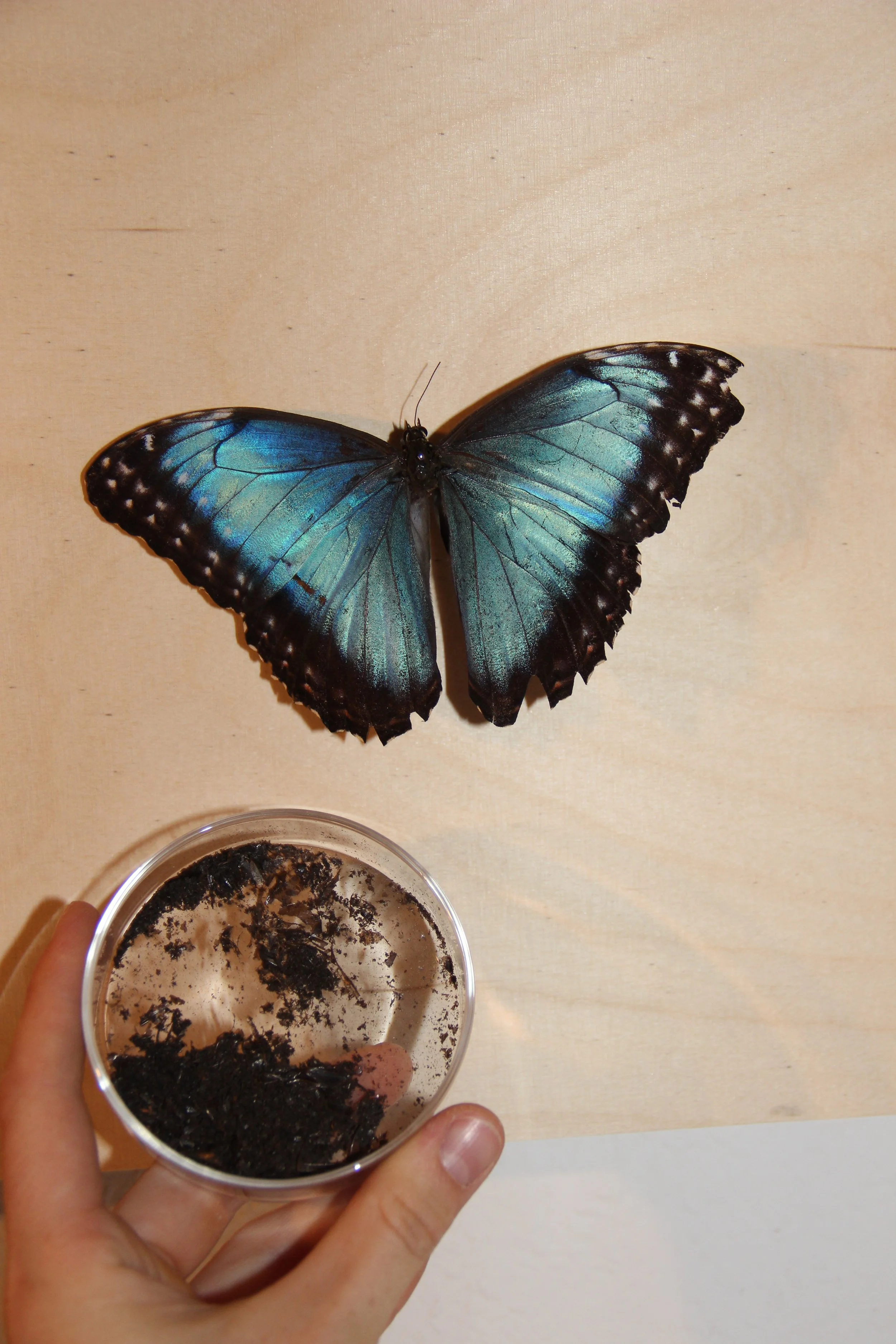
Experiment no. 2: Body Colours & Light Colours
One puzzle - three images
Body colours - based on pigments - do not always appear the same. They are influenced by the light colour. Some parts of the light are absorbed, others reflected and thus results in the colour that is visible to us.
If the incoming light does not contain the complete spectrum only a small part of the body colour can be reflected. Looking at the same object under different spectra - such as red, green and blue - can reveal varying images because body colours are perceived different depending on the source light colour. In this way one puzzle can contain three different images made visible under the respective lamp.



Experiment no. 3: Additive colours
Yellow = Yellow?
The colour yellow is a special player within additive colour mixing: it is part of the natural light spectrum but can also be created by mixing red and green light.
Conclusions on the composition of yellow can not be made when projecting onto a white background. Only the projection onto surfaces with different body colours exposes which spectrum the yellow is composed of: the colours of the objects underneath will look different depending on the light spectrum.


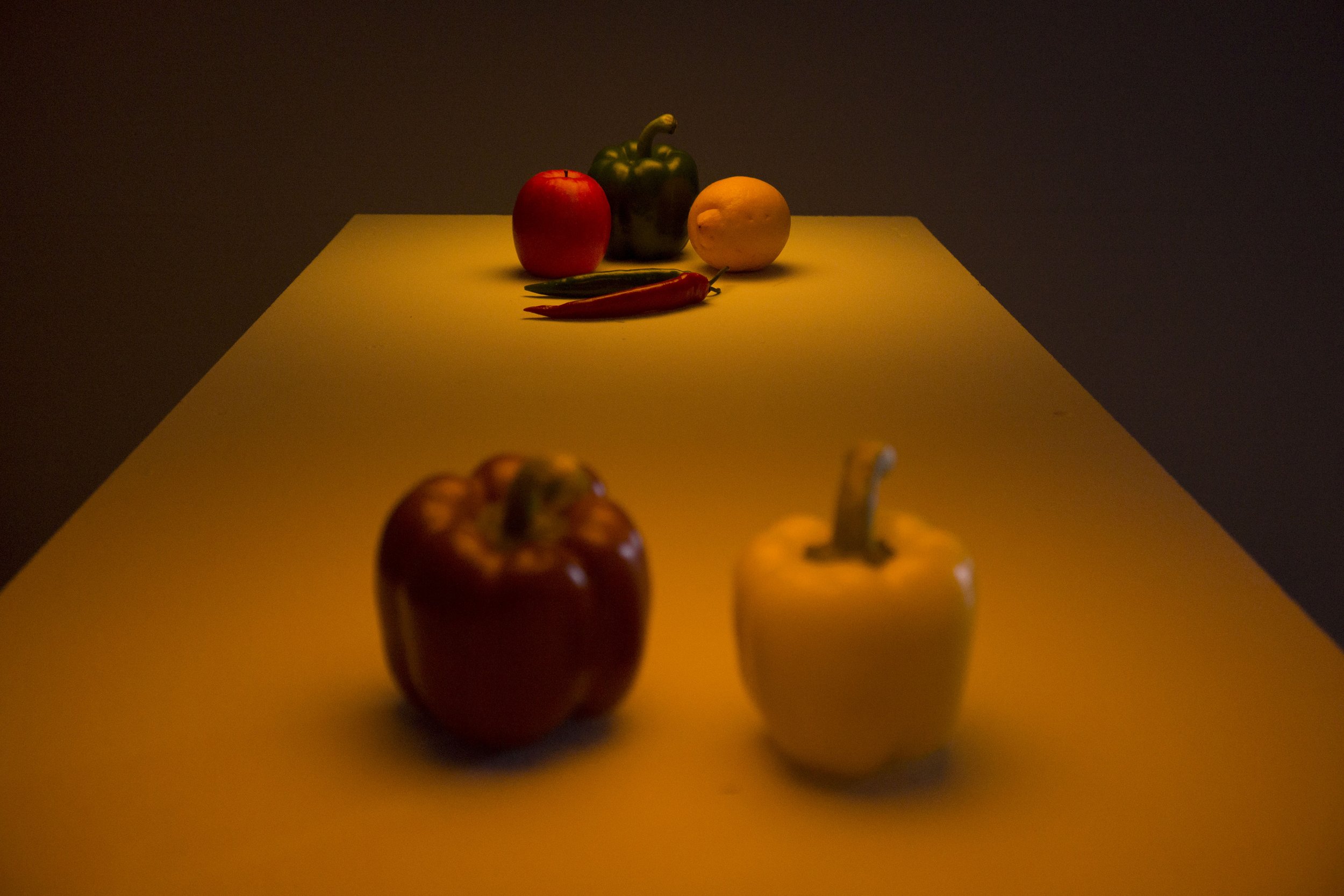

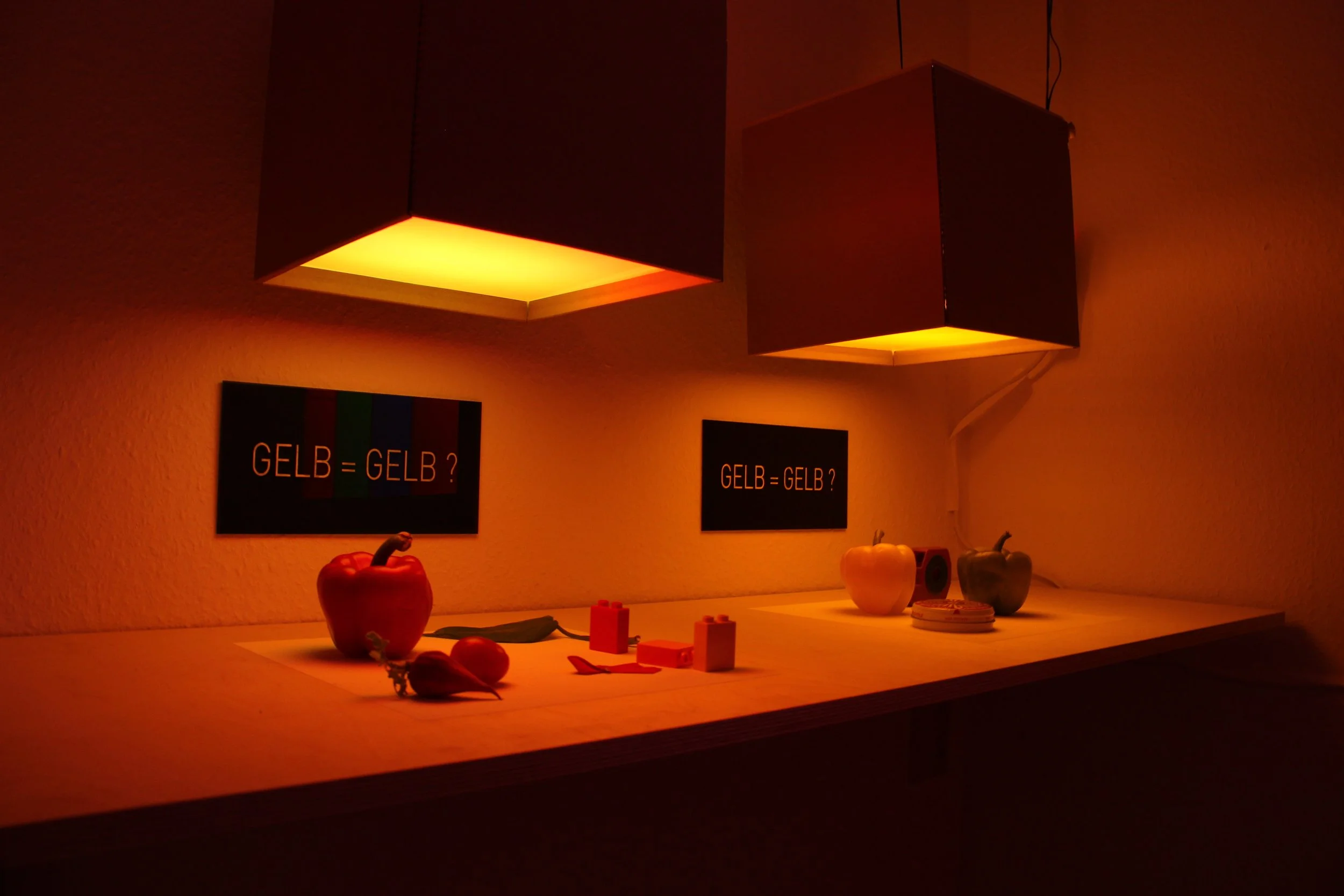
Experiment no. 4: Light filter
Playing with light colours
The electromagnetic spectrum gives the respective light color. Filters can change the color of light by filtering out part of the spectrum.
This phenomenon can be explored by exchanging and combining the light filters.
